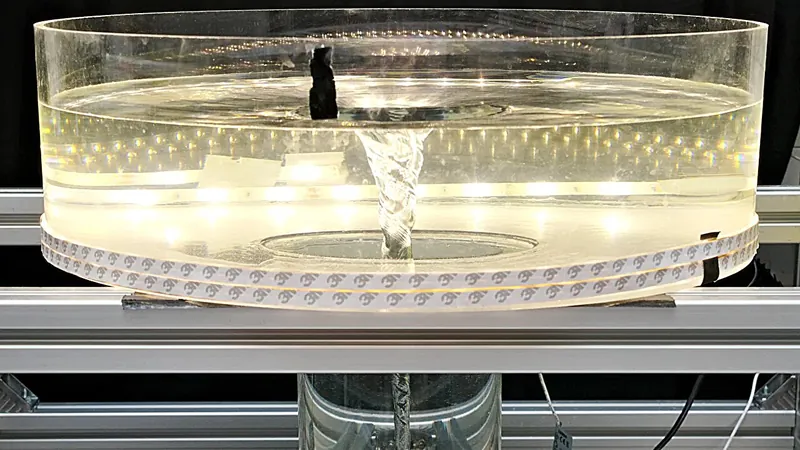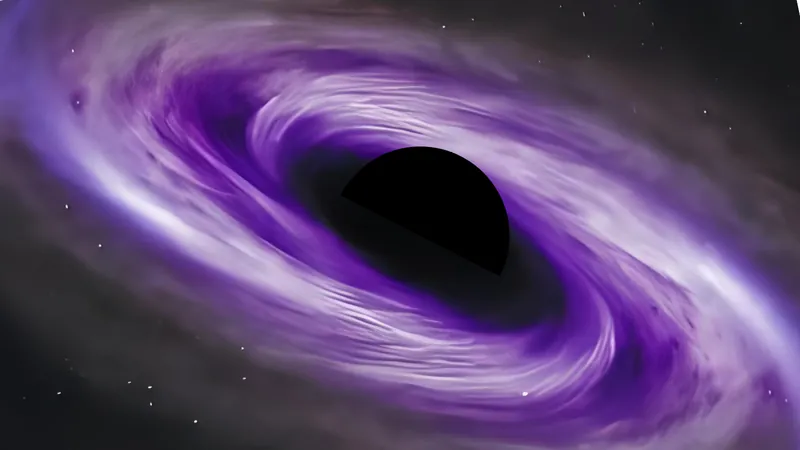
Dive Into the Cosmos: Researchers Create a Water Tornado to Simulate Planet Formation!
2025-07-21
Author: Olivia
Unveiling the Mysteries of Planet Formation
At the cutting-edge intersection of astronomy and engineering, researchers from the University of Greifswald and the Max Planck Institute for Astronomy have unveiled a groundbreaking experimental setup that simulates the swirling chaos of planet formation using an ingenious water tornado. This affordable, simple prototype aims to decode the complex dynamics of protoplanetary disks where planets are born!
Accretion Disks: The Cosmic Cradles of Planets
Across the universe, accretion disks—revolving clouds of gas and dust—surround newborn stars. As gravity pulls these materials inward, dust particles collide, stick together, and slowly grow into massive bodies, potentially evolving into planets. However, observing these processes directly is a challenge for scientists.
Bridging the Gap: Experiments Meet Simulations
To overcome the limitations of traditional simulations, which often miss critical details, the researchers have created a model that closely mimics the natural flow of a protoplanetary disk. Stefan Knauer from the University of Greifswald explains, "This innovative water tornado not only expands the simulated areas but also closely replicates the motions seen in real planetary systems." Initial tests revealed that Johannes Kepler's fundamental laws of planetary motion still apply in this watery vortex!
Creating a Cosmic Laboratory in a Water Tank
The experimental design is elegantly simple: a water tank made from two transparent acrylic cylinders of varying sizes produces a rotating vortex. By pumping water through nozzles in opposite directions, the team generates a gravitational effect that simulates the central force of a star.
Tracking the Dance of Particles
To further analyze the dynamics at play, researchers introduced small polypropylene beads into the tornado. Their swirling paths were meticulously recorded with high-speed cameras, providing insights into the interactions between gas and dust that are crucial for planet formation.
Kepler's Laws Still Reign Supreme!
Despite observing some deviations from Kepler’s first law—where celestial bodies orbit in elliptical paths—the majority of particle movements adhered to Kepler's second and third laws. This means the experiment is not just a clever simulation, but a promising tool for understanding orbital mechanics in cosmic environments.
A Vision for the Future
This exciting prototype is just the beginning! Researchers like Mario Flock are already looking ahead to refine the model for future studies. By optimizing the tank's design, they aim to reduce turbulence, ensuring that the water tornado can more accurately represent the serene, yet dynamic, conditions of planet-forming disks.
Join the Cosmic Journey!
As these scientists push the boundaries of our knowledge about how planetary systems evolve, the potential applications of their findings are vast. Their water tornado could one day unravel the secrets of how planets like Earth came to be. Stay tuned as we follow the evolution of this innovative experiment, which is sure to shed new light on the origins of our universe!









 Brasil (PT)
Brasil (PT)
 Canada (EN)
Canada (EN)
 Chile (ES)
Chile (ES)
 Česko (CS)
Česko (CS)
 대한민국 (KO)
대한민국 (KO)
 España (ES)
España (ES)
 France (FR)
France (FR)
 Hong Kong (EN)
Hong Kong (EN)
 Italia (IT)
Italia (IT)
 日本 (JA)
日本 (JA)
 Magyarország (HU)
Magyarország (HU)
 Norge (NO)
Norge (NO)
 Polska (PL)
Polska (PL)
 Schweiz (DE)
Schweiz (DE)
 Singapore (EN)
Singapore (EN)
 Sverige (SV)
Sverige (SV)
 Suomi (FI)
Suomi (FI)
 Türkiye (TR)
Türkiye (TR)
 الإمارات العربية المتحدة (AR)
الإمارات العربية المتحدة (AR)